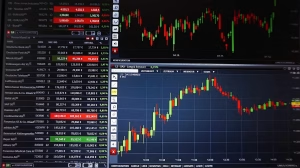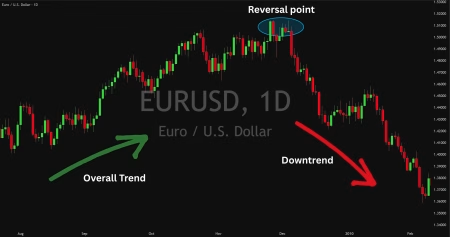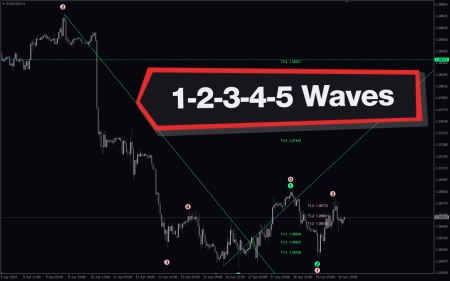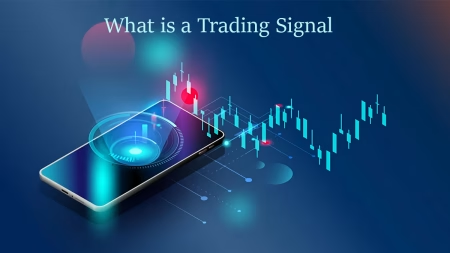As a trader, you know how key it is to stay ahead of market changes. But, the market’s ups and downs can feel overwhelming. That’s where the simple moving average (SMA) comes in. It’s a tool that helps you navigate the markets more smoothly.
Imagine the SMA as a buoy in stormy seas. It keeps you anchored to the market’s trends. By averaging closing prices over time, the SMA shows you the big picture. This helps you spot chances and avoid risks more clearly.
Key Takeaways
- The simple moving average (SMA) is a widely used technical analysis tool that helps identify market trends and potential trading signals.
- SMA calculates the average closing price of a security over a specified number of days, providing a clearer picture of the overall price direction.
- Shorter-term SMAs (e.g., 20-day or 50-day) are useful for short-term traders, while longer-term SMAs (e.g., 200-day) offer insights for long-term investors.
- Crossovers between short-term and long-term SMAs can generate buy and sell signals, indicating potential shifts in price direction.
- Understanding how to interpret and apply SMA in your trading strategy is crucial for making informed decisions in the markets.
What Is a Simple Moving Average (SMA)?
A simple moving average (SMA) is a tool used by traders and investors. It helps smooth out price changes and shows the trend direction of a security. It’s calculated by averaging the closing prices of a security over a set time period.
To find the SMA, you use the formula: SMA = (A1 + A2 + … + An) / n. Here, An is the price at period n, and n is the number of periods. For instance, a 15-day SMA for a security was $26.13.
Key Takeaways
- SMAs are arithmetic averages, smoothing out price fluctuations to provide a clearer view of an asset’s trend direction.
- SMAs can help determine if an asset’s price is likely to continue or reverse a trend, making them a useful technical indicator for trend determination.
- SMAs can be further enhanced as exponential moving averages (EMAs), which place more weight on recent prices to provide a more responsive indicator.

Understanding simple moving averages is key. Traders and investors can use this technical indicator in their trend determination strategies. It helps them analyze market movements better.
Understanding the Simple Moving Average (SMA)
The SMA Formula
The simple moving average (SMA) is a key tool in finance. It smooths out trends by averaging closing prices over time. This makes it easier to see the big picture.
The formula for the SMA is simple:
- SMA = (A1 + A2 + … + An) / n
- Where:
- A1, A2, …, An are the asset prices for the last n periods
- n is the number of time periods included in the calculation
This formula adds up the last n days’ closing prices and divides by n. This gives a sma formula that smooths out short-term ups and downs. It helps spot the overall trend.
Short SMAs change quickly with price changes. Long SMAs take longer to show new technical analysis. By using different SMAs, traders can look at various time frames and spot trends.

Calculating a Simple Moving Average Example
To grasp the simple moving average (SMA) calculation, let’s look at an example. Imagine we’re calculating the 15-day SMA for a stock. We sum up the closing prices of the last 15 days and then divide by 15.
For example, let’s say the closing prices for the last 15 days were: 20, 22, 24, 25, 23, 26, 28, 26, 29, 27, 28, 30, 27, 29, 28. To find the 15-day SMA, we follow these steps:
- We add up the closing prices: 20 + 22 + 24 + 25 + 23 + 26 + 28 + 26 + 29 + 27 + 28 + 30 + 27 + 29 + 28 = 392
- Then, we divide the total by 15: 392 / 15 = $26.13
The 15-day simple moving average is $26.13. This example shows how to calculate the simple moving average and gives us a clear sma example of price averaging demonstration.
The simple moving average is a key tool in technical analysis. It helps investors spot market trends and make smart trading choices. Knowing how to calculate the SMA lets traders understand market behavior better and enhance their trading strategies.
Trend Analysis with Simple Moving Averages
Simple moving averages (SMAs) are key in technical analysis trends and price trend identification. They show the direction of an asset’s price over time. An upward SMA means an uptrend, while a downward one shows a downtrend.
The longer the SMA, the smoother the trend line. But, longer SMAs lag behind actual price changes. A 10-day SMA quickly follows prices, while a 100-day SMA takes longer to react.
“Moving averages can signal support or resistance levels in technical analysis, and trading strategies often use them for trend identification and entry/exit points.”
Using different SMAs, like the 50-day and 200-day, can give strong trading signals. A cross of a stock’s 50-day SMA above its 200-day SMA signals an uptrend. Traders use these SMAs to spot the main market trend and make smart trades.
In short, simple moving averages are a strong tool for identifying and analyzing price trends. By knowing how SMAs work and using them in your analysis, you can better understand market movements. This helps you make more informed trading choices.
Simple Moving Average as a Trend Indicator
The simple moving average (SMA) is a key tool in technical analysis. It helps identify the price trend of an asset. By comparing the current price to the SMA, traders can tell if the trend is up or down.
If the price is above its SMA, the trend is up. A price below the SMA means the trend is down. The SMA line’s direction also gives trend signals. An upward-sloping SMA shows an uptrend, while a downward-sloping one signals a downtrend.
SMAs are often used with other indicators to confirm trends. For example, a price above both the 50-day and 200-day SMAs shows a strong uptrend. A price below both SMAs indicates a bearish trend. The sma as trend indicator is crucial for price trend identification and technical analysis trends.
One big advantage of SMAs is their simplicity. Traders can quickly see if the price is above or below the SMA. This gives a clear signal about the market direction. The SMA line’s slope also helps predict trend changes, helping traders adjust their strategies.
| Trend Direction | Price Relative to SMA | SMA Slope |
|---|---|---|
| Uptrend | Above SMA | Upward |
| Downtrend | Below SMA | Downward |
By using the simple moving average in their analysis, traders get valuable insights. They can better understand the current market price trend identification. This helps them make more informed trading decisions based on technical analysis trends.
Simple Moving Average Signals
Traders use two main types of simple moving average (SMA) signals. The first signal is when the price crosses above or below the SMA line. This can show a trend change. The second signal is when a shorter-term SMA crosses a longer-term SMA. This is called a “golden cross” or “death cross,” signaling a new trend.
Price Crossing SMA
When the price goes above the SMA, it might mean a bullish trend is starting. Going below the SMA could mean a bearish trend. Traders watch these crossovers closely for insights into market sentiment and momentum.
SMA Crossing SMA
The second signal is when a shorter-term SMA crosses a longer-term SMA. A “golden cross” is when the 50-day SMA crosses above the 200-day SMA. This is seen as a bullish sign, suggesting a new uptrend. On the other hand, a “death cross” is when the shorter-term SMA goes below the longer-term SMA. This is a bearish signal, hinting at a downtrend.
| Signal | Description | Potential Implication |
|---|---|---|
| Price Crossing SMA | Price of the asset crosses above or below the SMA line | Potential change in trend direction, bullish or bearish |
| SMA Crossing SMA | Shorter-term SMA crosses above or below a longer-term SMA (“golden cross” or “death cross”) | Potential start of a new uptrend or downtrend |
By watching these sma trading signals, traders can spot price crossing sma and sma crossing sma patterns. These patterns are key technical analysis signals for making smart trading choices.
Analytical Significance of SMAs
Simple Moving Averages (SMAs) are key in technical analysis. They offer deep insights into price trends, helping traders make smart choices.
By looking at a security’s current price against its SMA, traders see the trend’s direction. If it’s above, it’s likely going up. Below, it’s going down. This helps spot support and resistance levels and trend reversals.
Comparing SMAs of different lengths, like the 50-day and 200-day, boosts their power. A “golden cross” happens when the shorter SMA goes above the longer one, signaling a new uptrend. A “death cross” occurs when it goes below, hinting at a downtrend.
The value of sma analytical significance goes beyond just spotting trends. It also shows the trend’s strength and momentum. Stronger trends have steeper SMA slopes. This info is crucial for technical analysis applications and price trend identification, guiding traders on when to buy, sell, or adjust their positions.
In summary, SMAs are very important. They give a clear view of price behavior, making them essential for analysts and traders.
Popular Trading Patterns Using SMAs
Technical traders watch two key simple moving average (SMA) patterns: the “death cross” and the “golden cross.” These signals help spot trend reversals and market direction.
The Death Cross
The death cross happens when a shorter SMA, like the 50-day, falls below a longer SMA, like the 200-day. It’s a bearish sign, showing a shift from up to down market momentum. Traders might cut long positions or go short.
The Golden Cross
The golden cross is when a shorter SMA, like the 50-day, goes above a longer SMA, like the 200-day. It’s a bullish sign, hinting at a new up trend. Analysts see it as a time to enter or add to long positions.
These sma trading patterns are key for traders and analysts. They help spot trend reversal signals. Knowing the death cross and golden cross can help investors make better timing and decisions.
“Moving averages serve as dynamic support and resistance levels, and can confirm price actions and be used for risk management purposes.”
Simple Moving Average (SMA) vs Exponential Moving Average (EMA)
Choosing between a simple moving average (SMA) and an exponential moving average (EMA) is key in technical analysis. These indicators have their own strengths and weaknesses. It’s important to know the differences to make the right choice for your trading.
An SMA treats all data equally, while an EMA focuses more on recent prices. This makes the EMA quicker to react to market changes. It gives faster signals than the SMA.
Short-term traders like the EMA for its speed. It catches the latest market trends well. Long-term investors might prefer the SMA. It shows broader trends and is less affected by short-term changes.
Both sma vs ema and moving average indicators affect your technical analysis and trading plans. Try different moving averages and time frames. See what works best for you and your trading style.
“The choice between SMA and EMA is not a one-size-fits-all solution; it depends on your trading objectives and the market conditions you’re navigating.”
Deciding between SMA and EMA depends on your goals, risk level, and market. Knowing the differences can help you make better choices. This might improve your trading results.
Limitations of the Simple Moving Average
The simple moving average (SMA) is a common tool in technical analysis. However, it has some key limitations. One major issue is that SMAs rely too much on old data. They give equal weight to all data points in a set time, which can lead to missing recent, important price changes.
Also, the SMA only looks at past prices. This goes against the idea that current prices already show all available information. Some traders think SMAs might not be the best for predicting future prices.
Moreover, sma limitations include the risk of false signals, especially with shorter time frames. The moving average drawbacks also include lagging behind fast market changes. This makes it hard to spot the start or end of a trend.
Even though the SMA is still a useful tool in technical analysis caveats, its limitations are important to remember. Traders often use SMAs with other tools to understand the market better. This way, they can make more informed decisions.
| SMA Advantages | SMA Limitations |
|---|---|
|
|
“The simple moving average is a valuable tool, but it should be used in conjunction with other technical indicators to gain a more complete understanding of market trends and make informed trading decisions.”
Using Simple Moving Averages in Technical Analysis
As a trader, you can use simple moving averages (SMAs) to spot trends and time your trades. By comparing the SMA to the actual price, you can see if the trend is up or down. This helps you know when to buy or sell.
SMAs are key in crossover strategies. When short-term and long-term SMAs meet, it signals a trend change. A bullish crossover means the trend is up, while a bearish crossover means it’s down.
But remember, SMAs are lagging indicators. This means the trend might have changed before you see the signal. To get around this, traders often use SMAs with other tools like Bollinger Bands® and Stochastics.
In sma technical analysis, traders use different time frames for SMAs. They look at long-term (200 days), medium-term (50 days), and short-term (9, 10, and 20 days) SMAs. This helps them understand the market better and find the best times to trade.
Simple moving averages are a key tool for traders. They give clear signals about trend directions and changes. By using SMAs, you can make better trading decisions and increase your chances of success.
How to Calculate a simple moving average
Calculating a simple moving average (SMA) is easy. You add up the closing prices for a set number of periods. Then, you divide this total by the number of periods. This method is key in technical analysis to spot trends and guide trading choices.
To find the SMA, just follow these steps:
- Choose how many periods you want for your SMA. You might pick 15, 20, 50, or 200 days.
- Sum up the closing prices for your chosen number of periods.
- Divide this sum by the number of periods to get your SMA.
For instance, let’s use the last 15 days’ closing prices: $20, $22, $24, $25, $23, $26, $28, $26, $29, $27, $28, $30, $27, $29, $28. To find the 15-day SMA, add these prices together. Then, divide by 15. This gives you an SMA of $26.13.
| Time Period | Closing Price |
|---|---|
| Day 1 | $20 |
| Day 2 | $22 |
| Day 3 | $24 |
| Day 4 | $25 |
| Day 5 | $23 |
| Day 6 | $26 |
| Day 7 | $28 |
| Day 8 | $26 |
| Day 9 | $29 |
| Day 10 | $27 |
| Day 11 | $28 |
| Day 12 | $30 |
| Day 13 | $27 |
| Day 14 | $29 |
| Day 15 | $28 |
Knowing how to calculate a simple moving average helps you analyze market trends. It aids in making better trading decisions.
Difference Between SMA vs EMA
Technical analysis uses two main indicators: simple moving average (SMA) and exponential moving average (EMA). Both help understand market trends but differ in key ways. Traders need to know these differences.
The main difference is in how they handle past data. SMA treats all data equally, making trends easy to see. EMA, however, focuses more on recent prices. This makes it quicker to react to market changes.
EMA is better for short-term trading because it reacts fast. SMA is good for long-term trends because it’s steady. It’s less affected by sudden market changes.
| Characteristic | Simple Moving Average (SMA) | Exponential Moving Average (EMA) |
|---|---|---|
| Price Weighting | Equal weight to all data points | Greater weight on recent prices |
| Responsiveness | Slower to react to price changes | Quicker to respond to current market conditions |
| Trend Identification | Better for long-term trend analysis | Suitable for short-term trend trading |
| Sensitivity to Volatility | Less prone to false signals during volatile periods | More sensitive to price fluctuations, potentially leading to more false signals |
Choosing between SMA and EMA depends on your trading style. Some use both for different purposes. SMA for long-term views and EMA for quick trades.
Trading Strategies Using Simple Moving Averages
Traders use simple moving averages (SMAs) to spot market trends and find good times to buy or sell. They often look at two main strategies: buying and selling when SMAs intersect, and the SMA crossover method.
Buying and Selling on SMA Intersections
One key strategy is to watch for price movements across SMAs. Traders might buy when the price goes above an SMA and sell when it drops back below. This helps them make trading decisions based on SMA intersections.
SMA Crossover Strategy
The SMA crossover strategy is also popular. It tracks when a short-term SMA, like the 10-day SMA, crosses over or under a longer-term SMA, such as the 50-day or 200-day SMA. These moments can signal when to buy or sell, showing a trend change.
Traders often use SMAs of 10, 20, 50, 100, and 200 days. The choice depends on the trader’s time frame. Shorter SMAs react faster to price crossing sma and sma crossover events.
While SMAs are useful technical analysis signals, they have limits. They can be slow to react and might give false signals in volatile markets. Knowing these limitations helps traders use SMAs wisely in their overall trading strategy.
Conclusion
The simple moving average (SMA) is a key tool for traders and investors. It shows a clear trend in an asset’s price. This helps identify support and resistance levels, time market entries and exits, and see the market direction.
Even though SMAs have some downsides, like delayed signals in fast-changing markets, they are still very useful. They can be part of a strong trading strategy. By using SMAs with other indicators, you can make better trading choices.
Keep learning about technical analysis and try different SMA time frames. Using simple moving averages well will help you understand the financial markets better. This skill is crucial for navigating the fast-paced world of finance.








